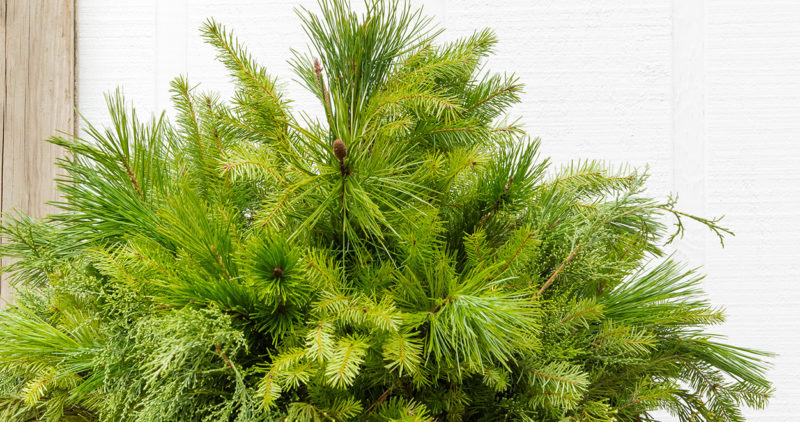
For beginning plant parents, the topic of indoor plant care might seem a little intimidating at first. There are a wide variety of plants we can enjoy indoors and with them come some differences in care requirements to keep them happy and healthy. Fortunately, there are several indoor plants that require very little attention – except for admiration that is. In fact, the less we fuss over them the better they do. These plants allow their owners the freedom to enjoy the many benefits of indoor plants without worrying about a perfect watering schedule, specialized lighting, or timely fertilization – making them the perfect place to start your first plant collection or easily expand an existing collection. Here, we’ll introduce you to five beautiful houseplants that give a lot more to their surroundings than they ask for in return.
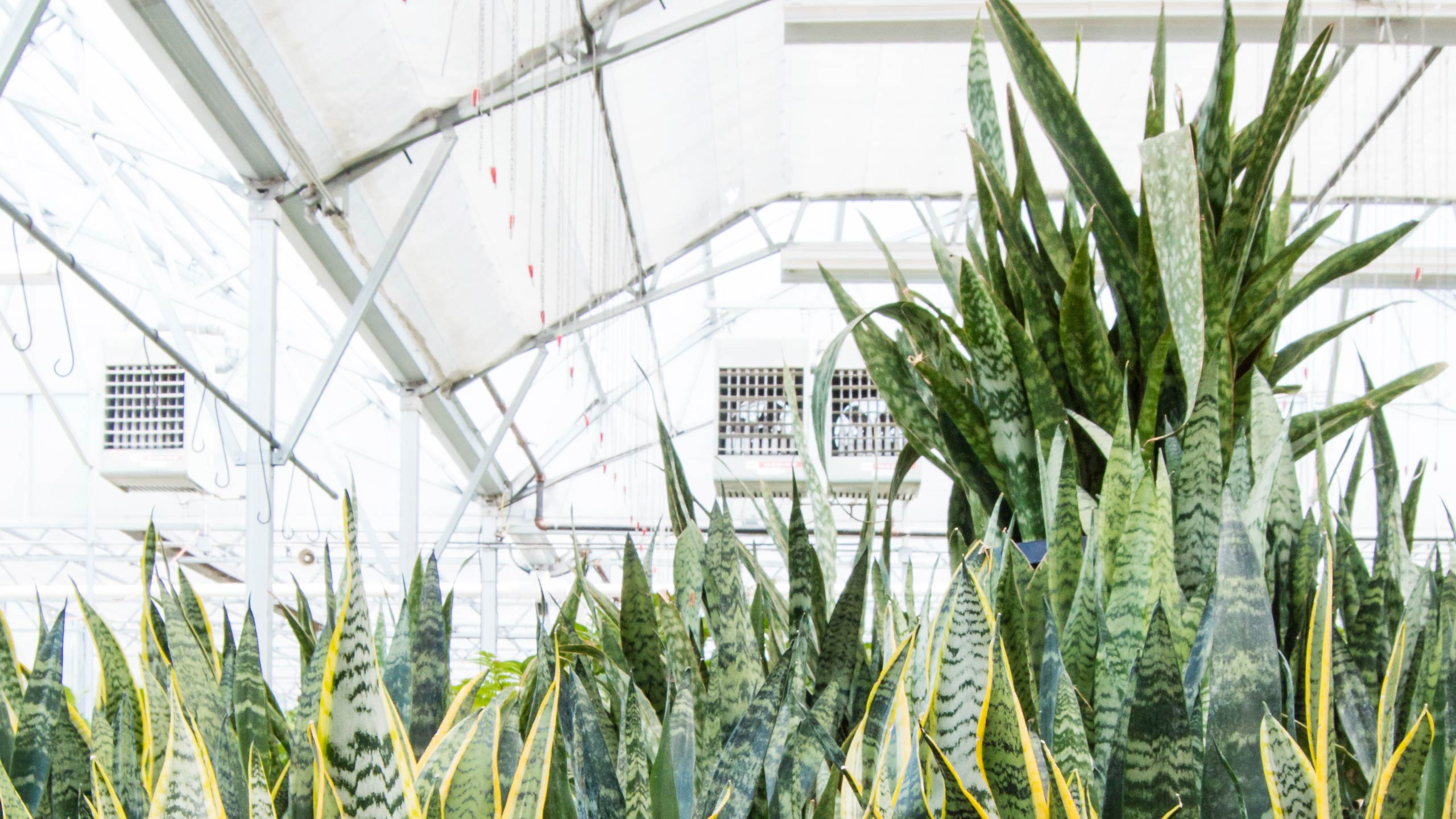
Sansevieria
If we had to pick the best example of a houseplant that asks for almost nothing but tolerates almost anything, the plants in the genus Sansevieria would take that honor. Sansevieria (the name serves as both their genus and one of their common names) are famous for their ability to thrive in any place in our homes. Whether they’re sitting near a bright window, in a dark corner across the room, or in a bathroom where the only available light is a fluorescent fixture, sansevieria keep right on showing off their rich blend of textures and colors. They can go years without repotting – they actually prefer to be root-bound – and pests are almost never an issue. Watering is simple too – wait until the soil is dry before giving a thorough drench. After that, you may not need to water again for several weeks. Greenhouse team member Erica Tirendi says sansevieria are so low-maintenance that the only thing you may need to worry about is taking care not to get water into the center of the rosette shapes formed by the leaves – this can cause the leaves to rot. So be careful to water just the soil and then let it drain completely. But just because sansevieria require little fussing doesn’t mean they’re boring at all. We recently received a new shipment of sansevieria that included the species Sansevieria laurentii, S. trifasciata ‘Black Gold’, and S. zeylanica, which, while similar in their foliage shape and upright form, have distinctive differences in the coloration and patterning. It’s these differences that make sanseveria popular with experienced plant collectors too.
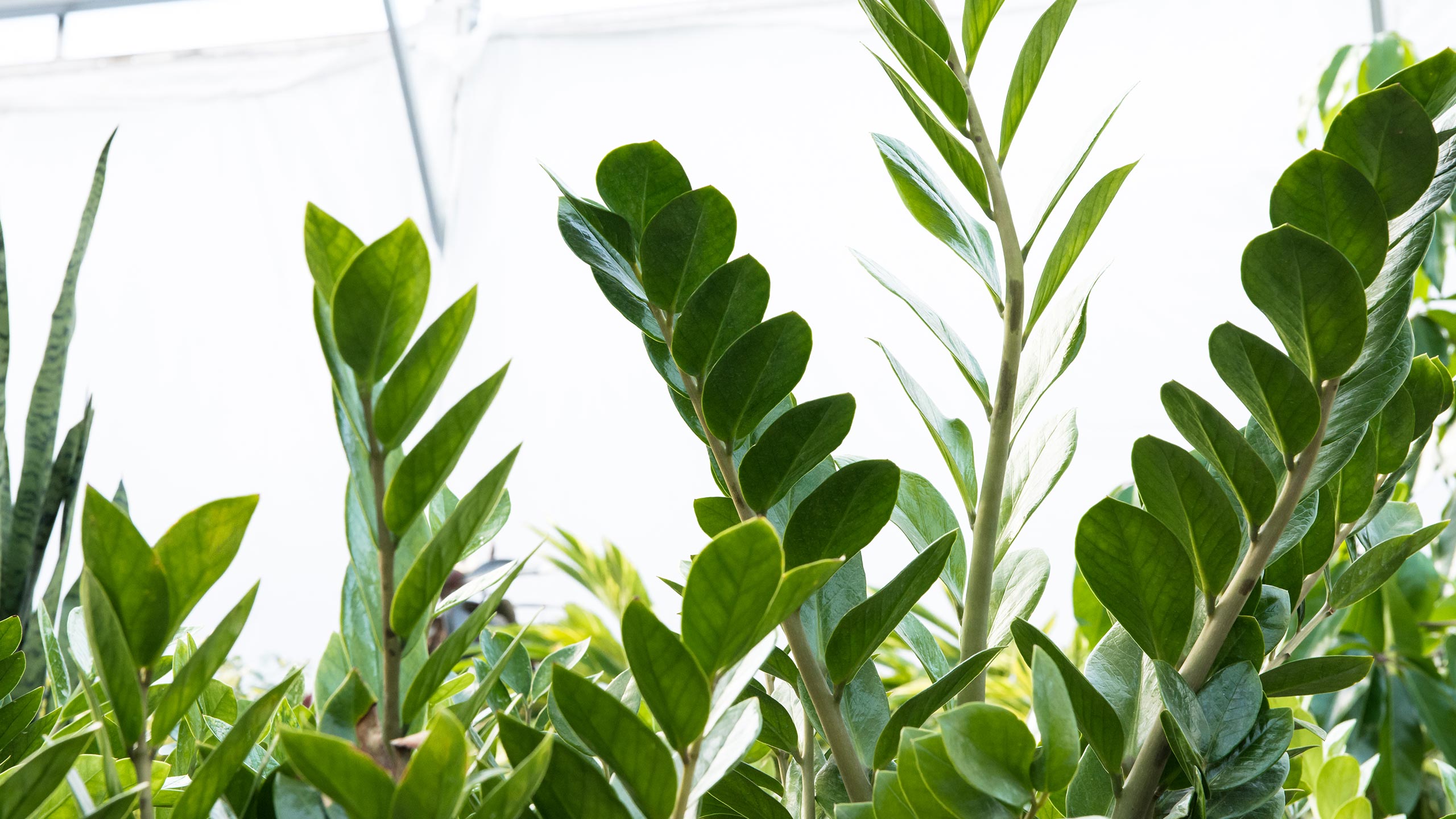
ZZ Plant
With a botanical name like Zamioculcas zamiifolia, it’s easy to see why plant enthusiasts have shortened this plant’s name to ‘ZZ plant.’ Its scientific name might be a challenge, but caring for a ZZ plant is certainly not. Like sansevieria, ZZ plants thrive best when fussed with the least. They prefer it if you hold the water until their soil is almost dry, they love low light so they’re happy just about anywhere in the house, and they only need one or two doses of dilute fertilizer a year during the growing season. Even if you forget that, they won’t mind. Also like sansevieria, the ZZ plant’s easy-going ways are matched with a handsome and striking presence. As thanks for letting it alone most of the time, your ZZ plant will reward you with beautiful glossy green leaves that grow along the length of upright, slightly arching stems. Whether you’re just starting with your first houseplant or you’re a plant expert who appreciates plants with interesting form and structure, a ZZ plant will make a great addition to any home.
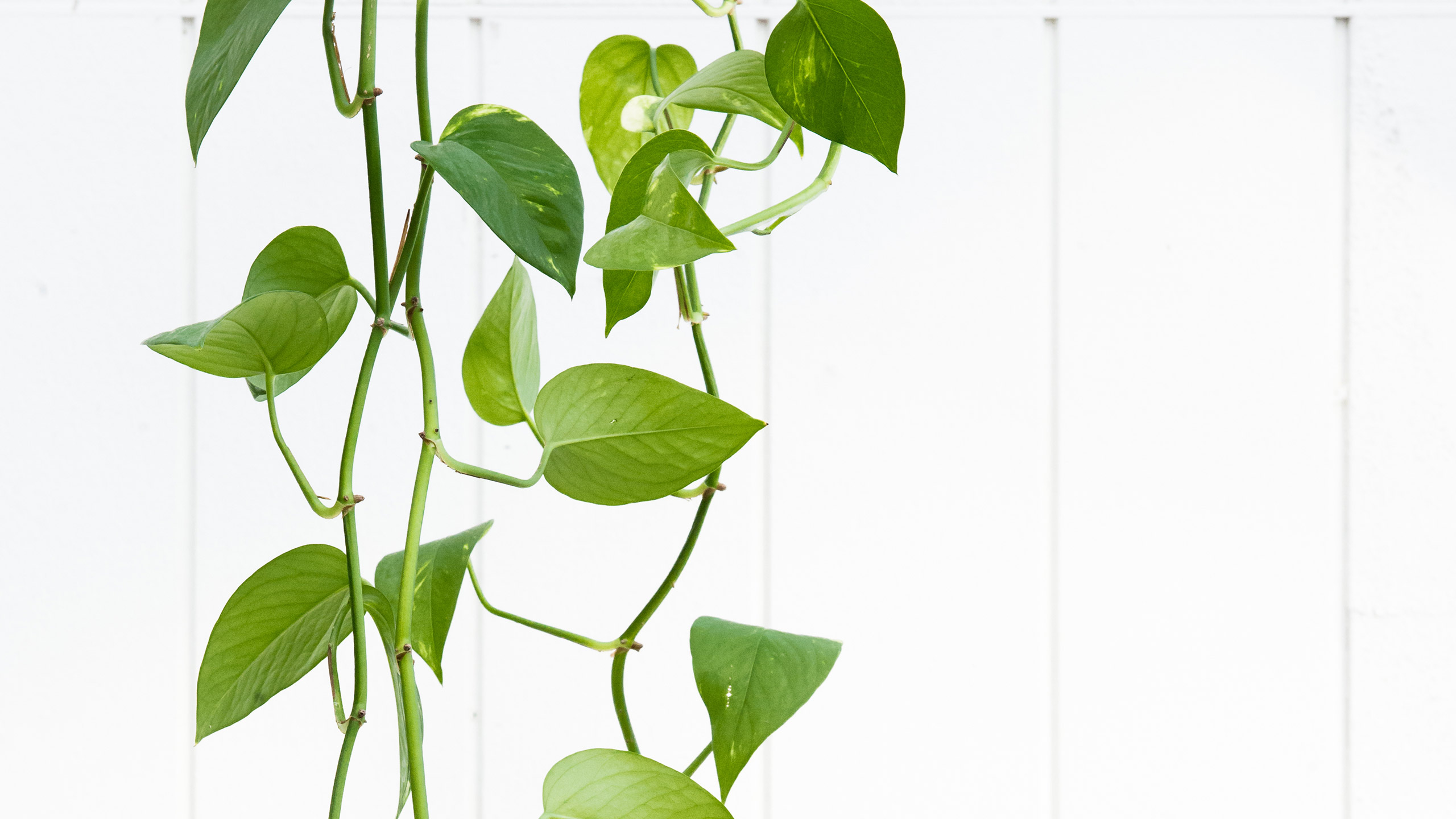
Pothos
As houseplants go, pothos is probably the most recognizable. Its popularity has spanned decades due to its glossy heart-shaped leaves, its tumbling vining habit, and its ability to withstand all the uneven care and less-than-ideal environments a semi-attentive plant-owner can throw at it. Not that pothos plants don’t appreciate consistent water and a spot with bright, indirect light – they do – but if they don’t get these things, they carry on for quite a long time before they let you know something might be off. Drooping might mean it finally needs a drink. Faded variegation might mean it wants to be a little closer to a window. The great thing about pothos is that – in the rare cases where they do show they’re feeling neglected – they’ll bounce right back with just a little attention. If you’re interesting in trying a little plant propagation, pothos are an easy place to start. Stem cuttings will root in water and can be used to start new plants. And like sansevieria, ease of care doesn’t mean boring with pothos. At the store, we have several different varieties, each with its own interesting features, including one that’s bright neon yellow, another that’s almost entirely covered with creamy variegation, and another called ‘picta’ that’s a satiny, silvery green with white Dalmation-like spots.
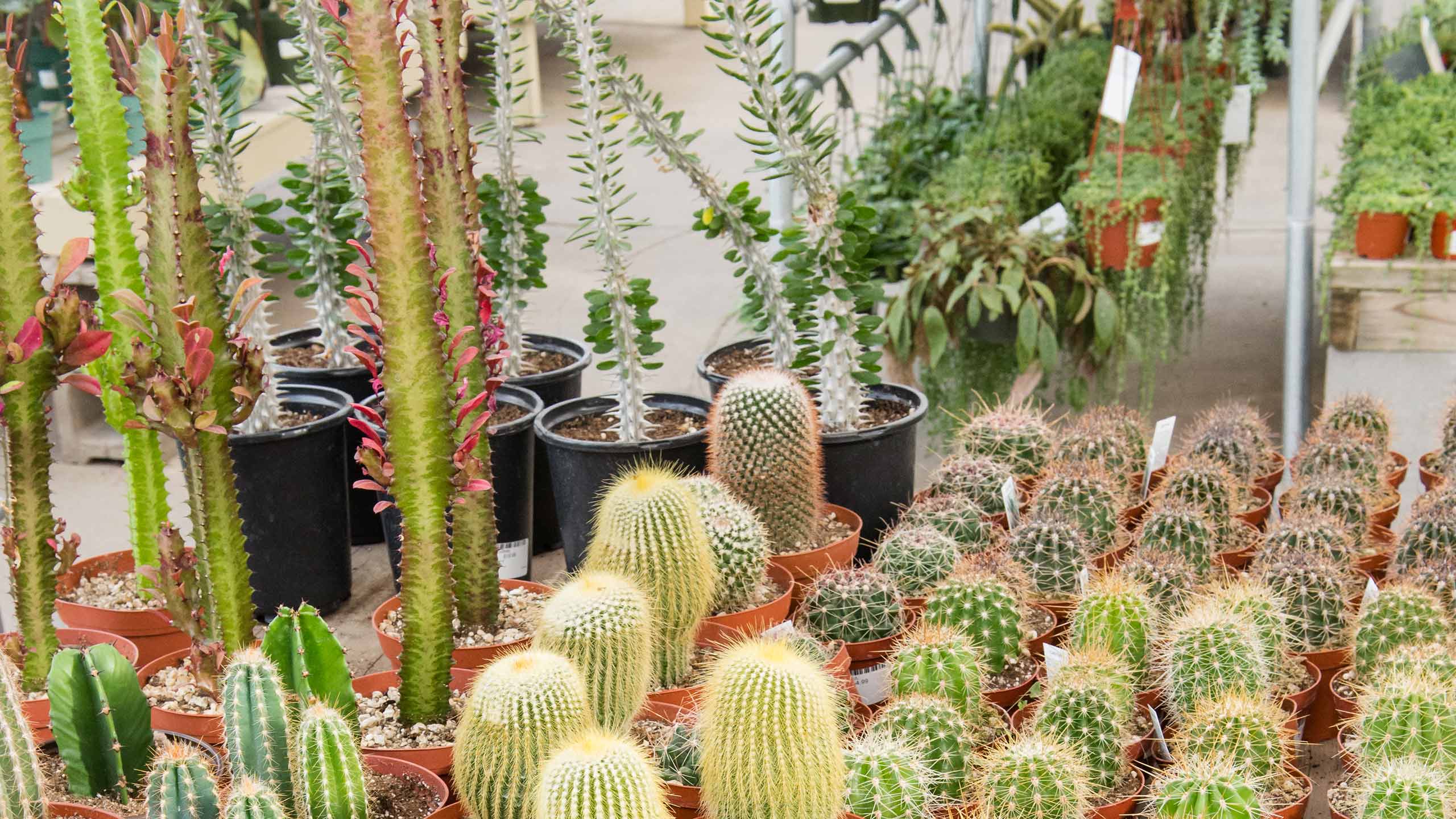
Cacti
Unlike the plants we’ve talked about so far, cacti are a bit picky about light. A cactus needs a lot of it, so find a spot near a south or west window where it will get at least four hours or more of direct sun. After that one demand is met though, you’re back to “less is more” when it comes to the other aspects of cactus care. Cacti prefer dry soil over wet, so watering is infrequent – every couple of weeks during the warmer months and even less in the winter. Like sansevieria, they can’t sit for long in wet soil, so be sure the soil is fast-draining and the pot has drain holes too. You’ll only need to fertilize your cactus during the growing season with a weak solution of water-soluble fertilizer. Or to make it even easier, try a slow-release granular fertilizer. Other than that, you’re free to enjoy the many interesting shapes and forms that cacti can take. Cacti can be tall or short, elongated or barrel-shaped, studded with intimidating two-inch thorns, or covered in endearing hair that almost makes them look cute. Sometimes they’ll even surprise you with a flower, which is what our greenhouse team member Pat Williams loves most about them.
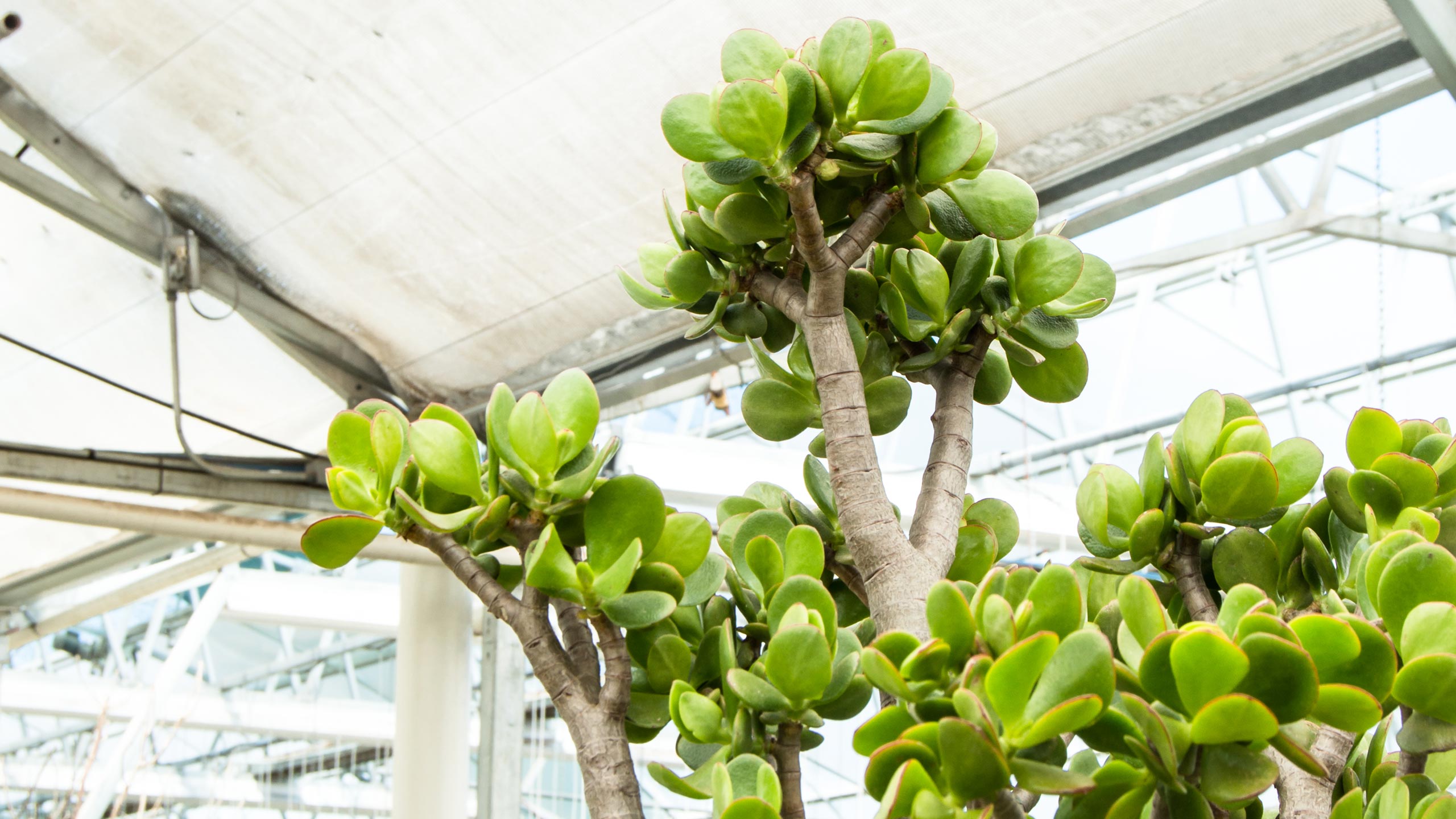
Jade
We saved jade plants for last because, of all the plants on this list, jade plants might ask for just a little more hands-on attention than the others. Jade plants are a type of succulent in the genus Crassula. Like cacti, they’re very easy to care for as long as they get several hours of bright light every day. But they appreciate a little more water than cacti do. Be sure to let their soil get dry – but not totally dry – before giving them a thorough watering. Erica says wrinkled leaves will show you the plant needs drink. Also, Erica recommends pinching back new growth occasionally to keep jade plants nicely shaped. Just don’t trim the entire plant at once. Instead, pinch back a few branches at a time so your jade isn’t stressed by big sudden changes. The cuttings you create can be used to start new plants too. Just let the ends of the cuttings dry a little bit, then stick them into new cactus and succulent soil. They’ll take off easily and you’ll have more jade plants to enjoy or share with friends.
These easy houseplants are perfect for beginning plant parents to enjoy as they gain experience caring for indoor plants. And experienced plant-collectors can appreciate a few laid-back plant friends to go along with the more demanding personalities in their collection. But, even with easy plants, questions do come up.


